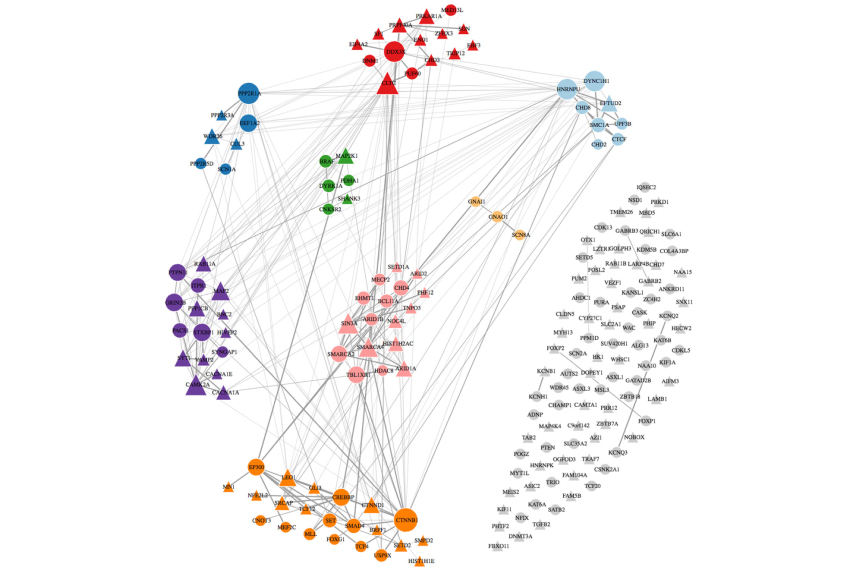
THIS ARTICLE IS MORE THAN FIVE YEARS OLD
This article is more than five years old. Autism research — and science in general — is constantly evolving, so older articles may contain information or theories that have been reevaluated since their original publication date.
An algorithm combs through genetic data to identify variants involved in autism and four other brain conditions1.
The method expands on an older approach called transmission and de novo association (TADA), which combines information about inherited and spontaneous mutations to identify risk genes. Layering the two types of genetic information increases the chances of finding hits on the same gene, implicating that gene in a condition.
TADA provides no information about the accuracy of its predictions, however. The new method, extended transmission and de novo association (extTADA), offers confidence intervals for each risk gene it spots. It also doesn’t require information about known risk genes as its predecessor does, and it is easier to use: It performs its analysis in a single step rather than requiring multiple calculations.
The researchers pulled genetic information from published studies of people with one of five conditions — autism, intellectual disability, ‘developmental disorders,’ schizophrenia or epilepsy. They also incorporated information from databases of genes and their functions.
For schizophrenia, the researchers analyzed 19,358 genes from 6,699 people with the condition, 13,028 controls and 1,077 ‘trios’ or ‘quads’ — parents with either one or two children with schizophrenia. The algorithm identified 1,551 schizophrenia genes, each of which confers a small risk, with a 95 percent confidence interval. Some of these are newly identified risk genes.
In the case of autism, the algorithm examined 19,347 genes from 404 people with the condition, 3654 controls and 5,122 trios. It flagged 859 potential risk genes, consistent with results from TADA.
The researchers also found risk genes for the other three conditions; all five conditions share risk variants.
To examine the ties between these conditions, the researchers selected 288 genes that contribute significantly to four of the conditions (excluding schizophrenia). They plugged that list into a gene-network analysis tool called GeNets.
The platform revealed that 149 of the genes work in biological pathways that include known risk genes for neurodevelopmental conditions. Some of the pathways are involved in neuronal signaling and development.
The researchers described their algorithm 20 December in Genome Medicine.
By joining the discussion, you agree to our privacy policy.